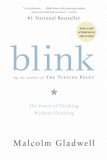Summary | Excerpt | Reading Guide | Reviews | Beyond the Book | Readalikes | Genres & Themes | Author Bio

Critics' Opinion:
Readers' Opinion:
First Published:
Jan 2005, 288 pages
Paperback:
Apr 2007, 320 pages
 Book Reviewed by:
Book Reviewed by:
BookBrowse Review Team
Buy This Book
Just as important, though, is the information you don't have when you look through someone's belongings. What you avoid when you don't meet someone face-to-face are all the confusing and complicated and ultimately irrelevant pieces of information that can serve to screw up your judgment. Most of us have difficulty believing that a 275-pound football lineman could have a lively and discerning intellect. We just can't get past the stereotype of the dumb jock. But if all we saw of that person was his bookshelf or the art on his walls, we wouldn't have that same problem.
What people say about themselves can also be very confusing, for the simple reason that most of us aren't very objective about ourselves. That's why, when we measure personality, we don't just ask people point-blank what they think they are like. We give them a questionnaire, like the Big Five Inventory, carefully designed to elicit telling responses. That's also why Gottman doesn't waste any time asking husbands and wives point-blank questions about the state of their marriage. They might lie or feel awkward or, more important, they might not know the truth. They may be so deeply mired—or so happily ensconced—in their relationship that they have no perspective on how it works. "Couples simply aren't aware of how they sound," says Sybil Carrère. "They have this discussion, which we videotape and then play back to them. In one of the studies we did recently, we interviewed couples about what they learned from the study, and a remarkable number of them—I would say a majority of them—said they were surprised to find either what they looked like during the conflict discussion or what they communicated during the conflict discussion. We had one woman whom we thought of as extremely emotional, but she said that she had no idea that she was so emotional. She said that she thought she was stoic and gave nothing away. A lot of people are like that. They think they are more forthcoming than they actually are, or more negative than they actually are. It was only when they were watching the tape that they realized they were wrong about what they were communicating."
If couples aren't aware of how they sound, how much value can there be in asking them direct questions? Not much, and this is why Gottman has couples talk about something involving their marriage—like their pets—without being about their marriage. He looks closely at indirect measures of how the couple is doing: the telling traces of emotion that flit across one person's face; the hint of stress picked up in the sweat glands of the palm; a sudden surge in heart rate; a subtle tone that creeps into an exchange. Gottman comes at the issue sideways, which, he has found, can be a lot quicker and a more efficient path to the truth than coming at it head-on.
What those observers of dorm rooms were doing was simply a layperson's version of John Gottman's analysis. They were looking for the "fist" of those college students. They gave themselves fifteen minutes to drink things in and get a hunch about the person. They came at the question sideways, using the indirect evidence of the students' dorm rooms, and their decision-making process was simplified: they weren't distracted at all by the kind of confusing, irrelevant information that comes from a face-to-face encounter. They thin-sliced. And what happened? The same thing that happened with Gottman: those people with the clipboards were really good at making predictions.
5. Listening to Doctors
Let's take the concept of thin-slicing one step further. Imagine you work for an insurance company that sells doctors medical malpractice protection. Your boss asks you to figure out for accounting reasons who, among all the physicians covered by the company, is most likely to be sued. Once again, you are given two choices. The first is to examine the physicians' training and credentials and then analyze their records to see how many errors they've made over the past few years. The other option is to listen in on very brief snippets of conversation between each doctor and his or her patients.
This is the full text of Chapter 1 of Blink (pages 18-47). Copyright © 2005 by Malcolm Gladwell. All rights reserved. No part of this book maybe reproduced without written permission from the publisher, Little, Brown & Co.





The Flower Sisters
by Michelle Collins Anderson
From the new Fannie Flagg of the Ozarks, a richly-woven story of family, forgiveness, and reinvention.

The House on Biscayne Bay
by Chanel Cleeton
As death stalks a gothic mansion in Miami, the lives of two women intertwine as the past and present collide.

The Funeral Cryer by Wenyan Lu
Debut novelist Wenyan Lu brings us this witty yet profound story about one woman's midlife reawakening in contemporary rural China.
Your guide toexceptional books
BookBrowse seeks out and recommends the best in contemporary fiction and nonfiction—books that not only engage and entertain but also deepen our understanding of ourselves and the world around us.